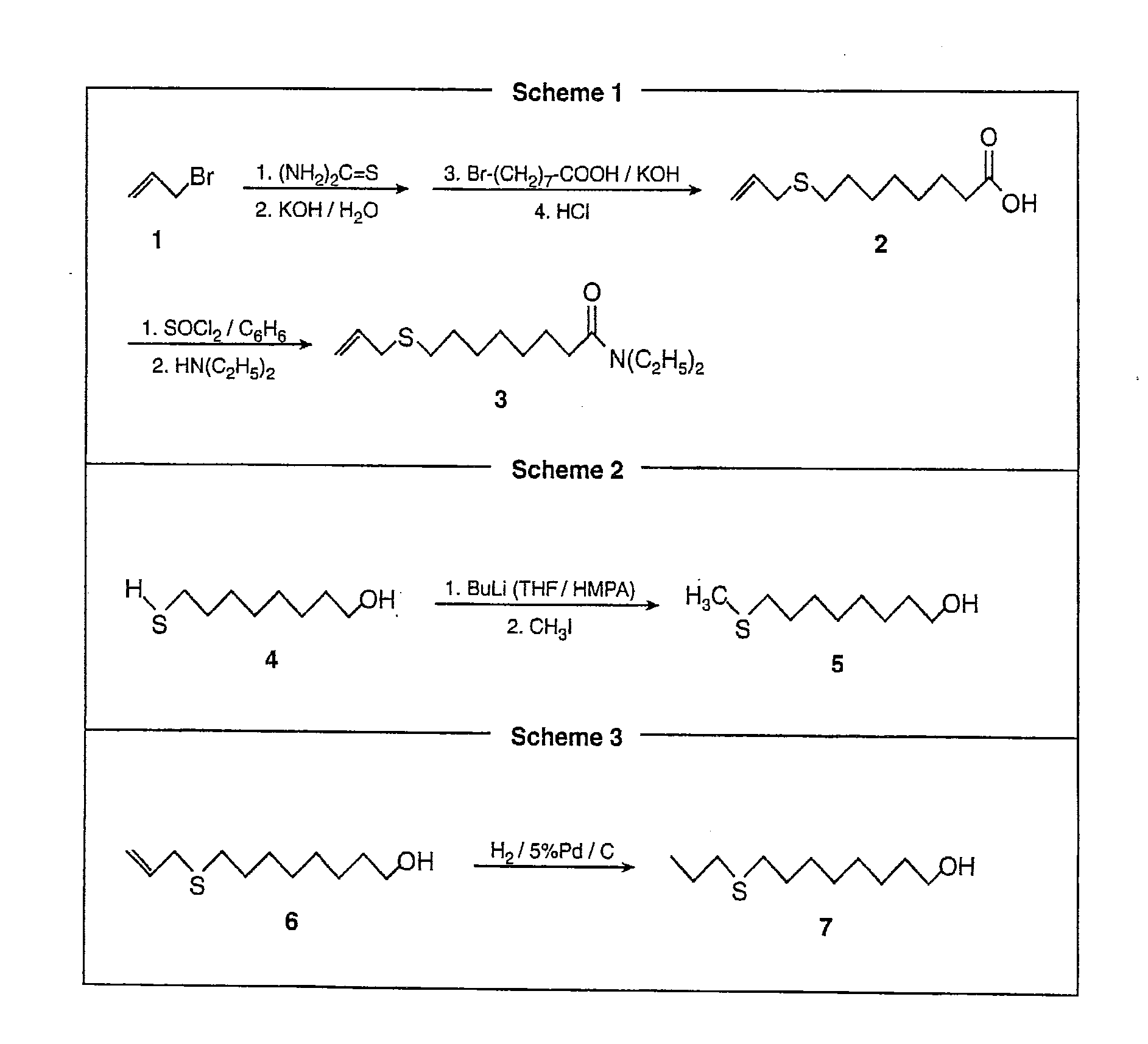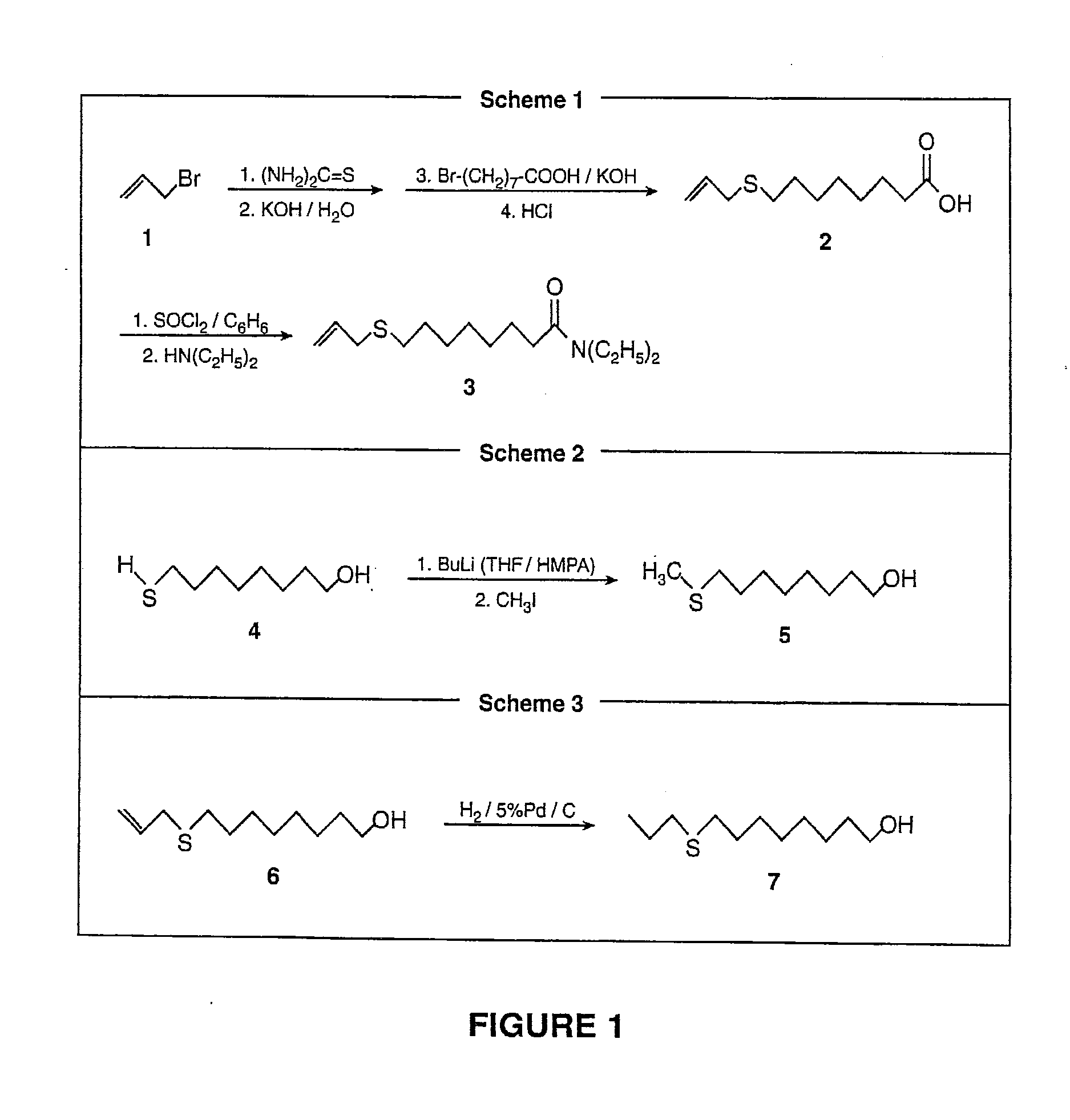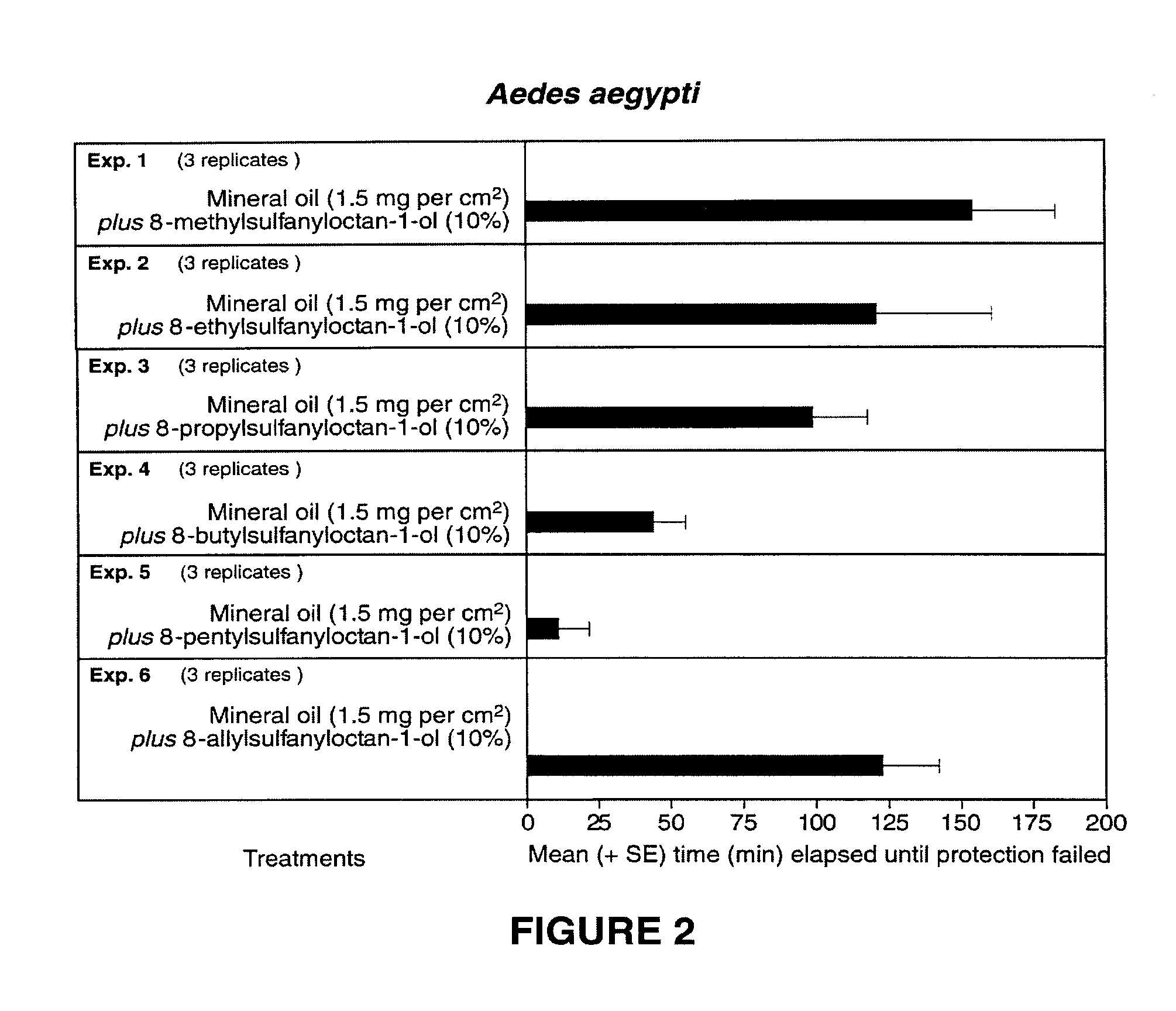Compounds and methods for repelling blood-feeding arthropods and deterring their landing and feeding
a technology of arthropods and compounds, applied in the field of compounds and methods for repelling blood-feeding arthropods and deterring their landing and feeding, can solve the problems that products exceeding 30% n, n-diethyl-m-toluamide are not recommended for children's protection, and achieve the effect of improving the repellent and deterrent effect against landing
- Summary
- Abstract
- Description
- Claims
- Application Information
AI Technical Summary
Benefits of technology
Problems solved by technology
Method used
Image
Examples
example 2
General Bioassay Procedure
[0025]Candidate repellents and deterrents were bioassayed according to a modified protocol from the World Health Organization (1996). At least 1 hour prior to each bioassay, 75 host-seeking non blood-fed, nulliparous, 5- to 8-day-old female Aedes aegypti were placed into a wood-framed cage (26.5 cm on each side and 42.5 cm high) with a wooden floor, screened mesh sides and top, and a clear acrylic front fitted with a cotton stockinette sleeve (10 cm diameter). The test subject's arm was covered with an elbow-length polyethylene glove with an excised patch (16.6 cm long, 6 cm wide) to expose the ventral forearm of the test subject. Candidate deterrents were formulated in mineral (paraffin) oil and applied to the exposed forearm 5 min prior to inserting the arm into the cage. The inserted arm remained in the cage for 3 min every 30 min. Prior to each 3-min bioassay period, the hand of the untreated arm was inserted into the cage to ascertain that it received ...
example 3
Synthesis of (N,N)-Diethyl-8-allylsulfanyl-octanamide (FIG. 2, Scheme 1)
[0027]A mixture of allylbromide (1, 1.30 ml, 15 mmol) and thiourea (1.45 g, 15 mmol) was refluxed in 50 ml of anhydrous ethanol for 3 hours and cooled to 25° C. Pellets of KOH (1.62 g, 30 mmol) were added together with water (0.30 ml). The reaction mixture was then refluxed for 2 hours. 8-Bromooctanoic acid was alkylated with potassium allylmercaptade (Jie et al. 1989) by adding to the reaction mixture 8-bromooctanoic acid (2.23 g, 10 mmol) and KOH (1.30 g), and refluxing for 5 hours under argon. Thereafter, water (50 ml) was added and the reaction mixture was extracted with hexane (2×40 ml). The aqueous solution was acidified with conc. HCl and extracted again with ether (2×40 ml). Ethereal extracts were washed with a saturated aq. NaCl solution and were dried over anh. MgSO4. Evaporation of solvents gave 8-allylsulfanyl-octanoic acid (2) (50% pure by GC); MS [m / z (rel. intensity)]: 216 (M+,100), 199 (26), 169 ...
example 4
Synthesis of 8-methylsulfanyl-1-octanol (FIG. 2, Scheme 2)
[0029]A 2.5 M BuLi solution (4 ml, 10 mmol) in hexane was added at −78° C. under stirring to 8-mercapto-1-octanol (4) (0.84 g, 4.76 mmol) (Narchem Corp., Chicago Ill.) dissolved in a 4:1 mixture of THF / HMPA. After 30 min, iodomethane (0.6 ml, 10 mmol) was added in one portion. The reaction mixture was allowed to warm to room temperature, quenched with water, and extracted with ether (2×30 ml). Ethereal extracts were washed with a saturated aq. NaCl solution, dried over anh. MgSO4, and concentrated. Purification by flash chromatography afforded 0.65 g of known 8-methylsulfanyl-1-octanol (5) (Bennett & Gudgeon 1938; Kawabato et al. 1989) (>99% pure by GC, 78% yield).
[0030]Other 8-alkylsulfanyl-1-octanols, including 8-methylsulfanyloctan-1-ol, 8-ethylsulfanyloctan-1-ol (compound previously known; Hu & Neckers, 1997), 8-propylsulfanyloctan-1-ol, 8-butylsulfanyloctan-1-ol and 8-pentylsulfanyloctan-1-ol were furnished in similar wa...
PUM
| Property | Measurement | Unit |
|---|---|---|
| Mass | aaaaa | aaaaa |
Abstract
Description
Claims
Application Information
 Login to View More
Login to View More - R&D Engineer
- R&D Manager
- IP Professional
- Industry Leading Data Capabilities
- Powerful AI technology
- Patent DNA Extraction
Browse by: Latest US Patents, China's latest patents, Technical Efficacy Thesaurus, Application Domain, Technology Topic, Popular Technical Reports.
© 2024 PatSnap. All rights reserved.Legal|Privacy policy|Modern Slavery Act Transparency Statement|Sitemap|About US| Contact US: help@patsnap.com










